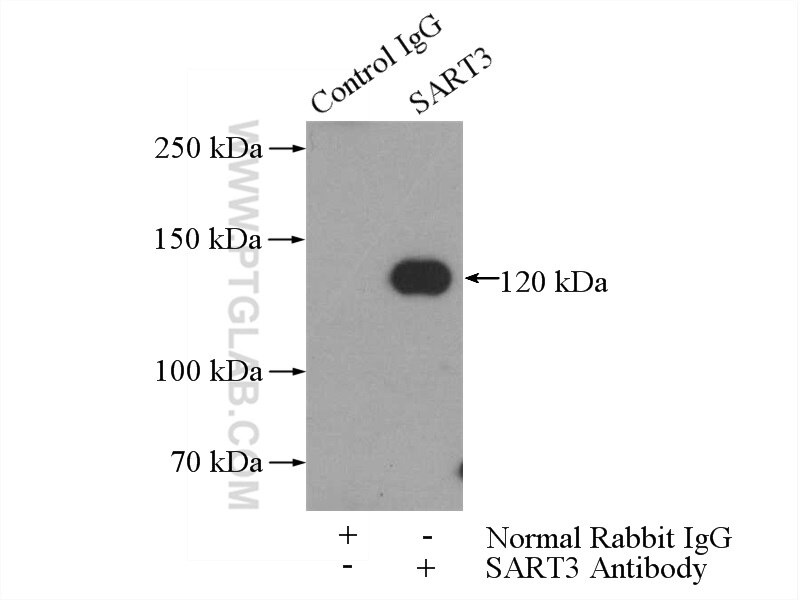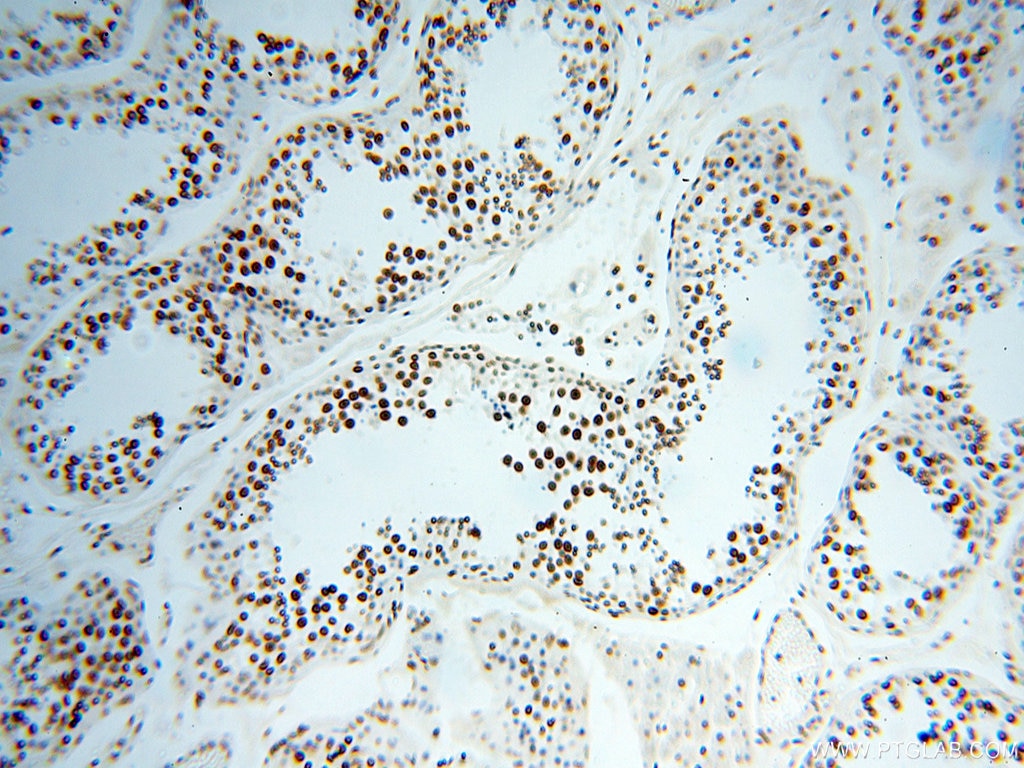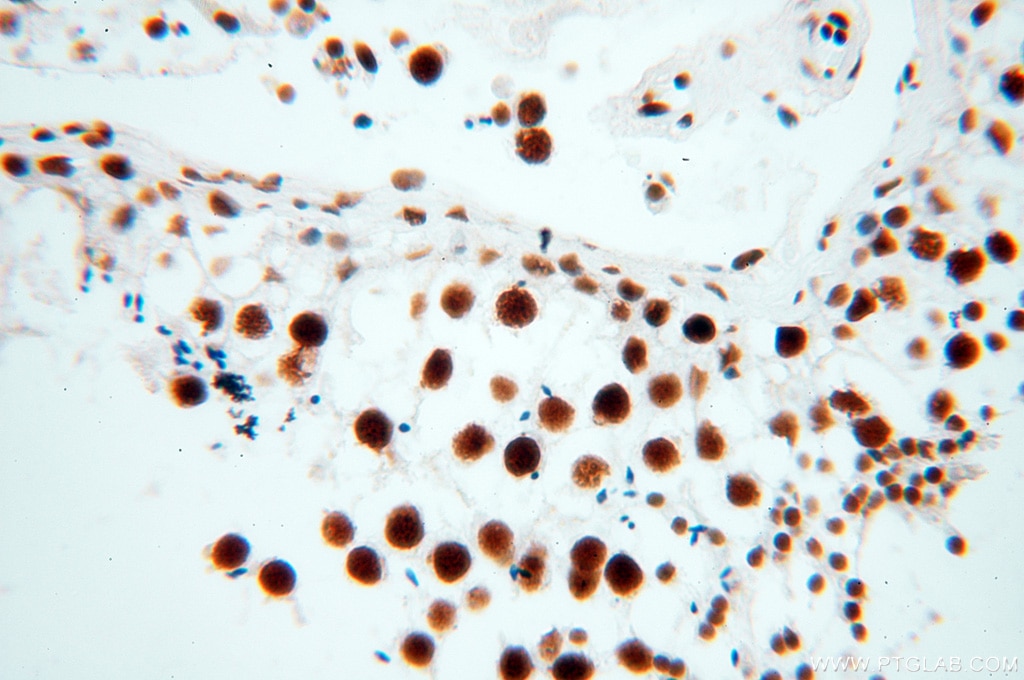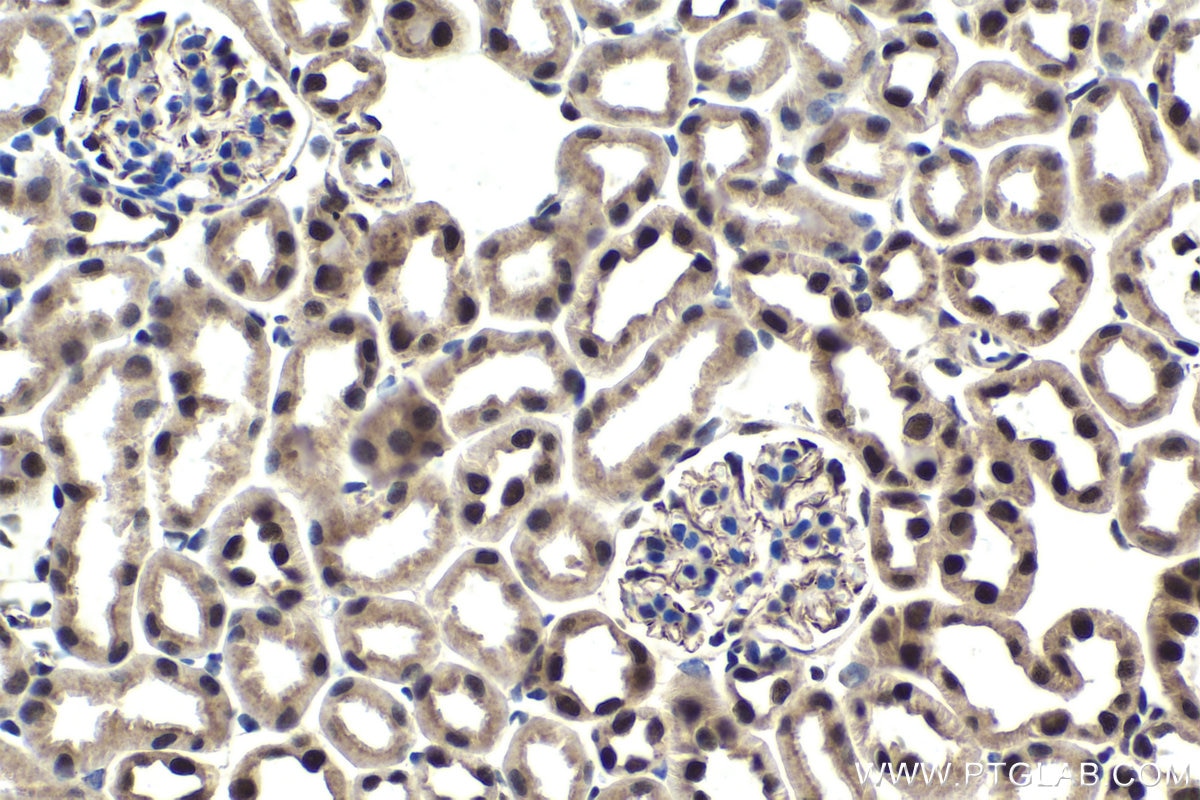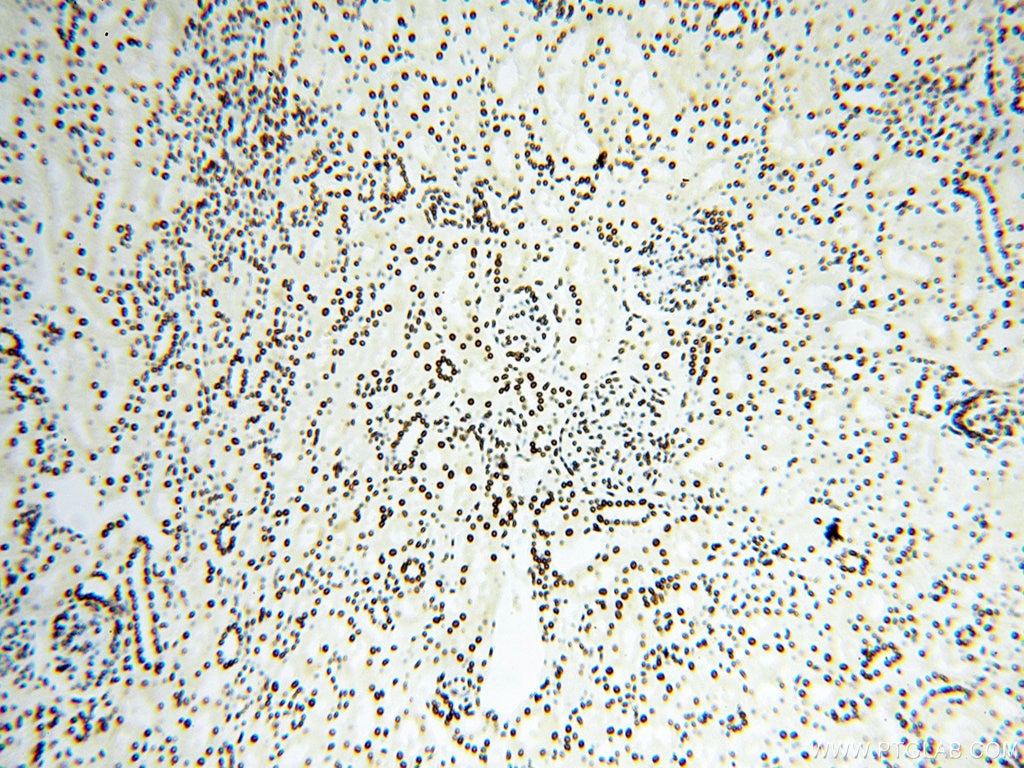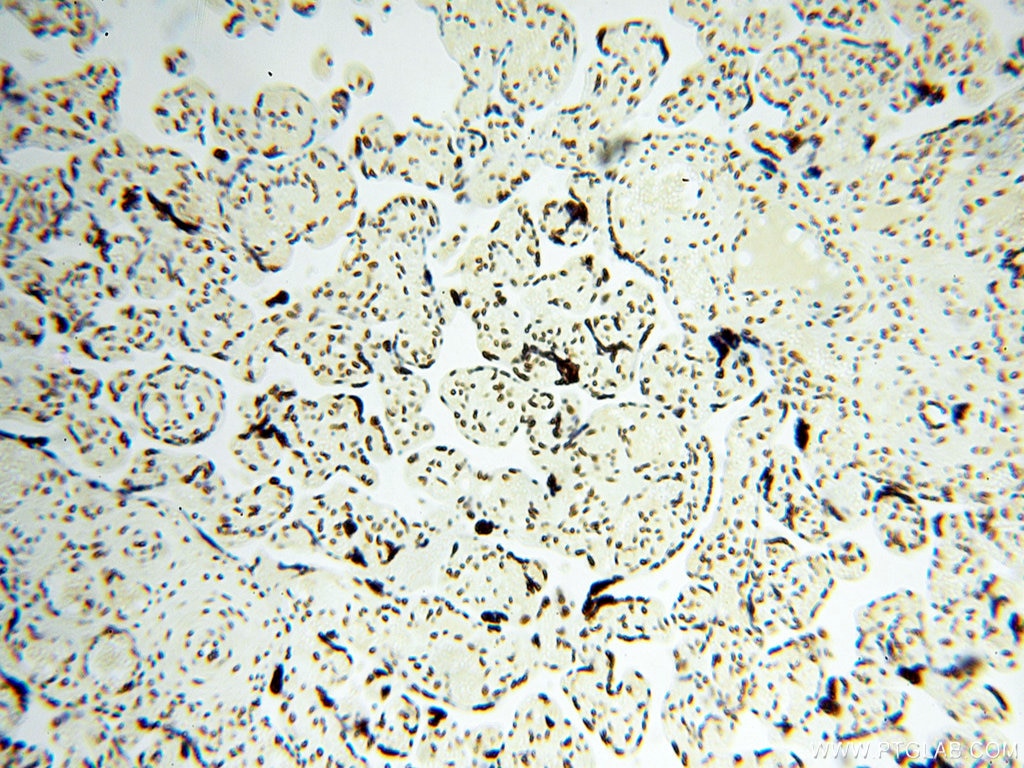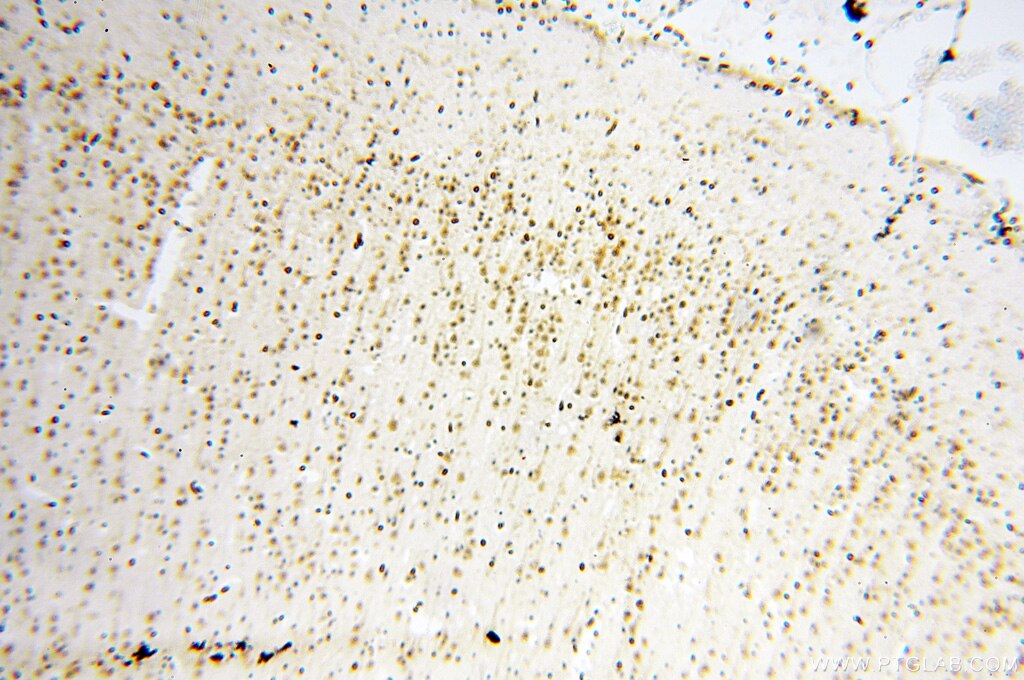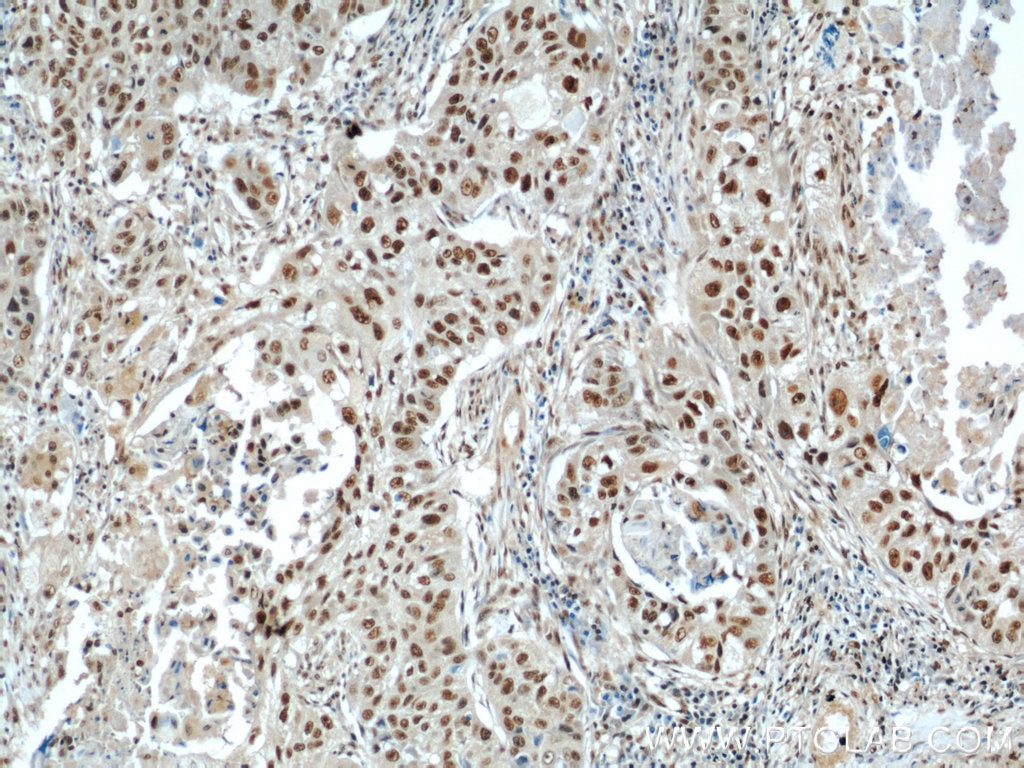IHC Figures
IHC staining of human testis using 18025-1-AP
Immunohistochemical analysis of paraffin-embedded human testis using 18025-1-AP (SART3 antibody) at dilution of 1:100 (under 10x lens).
IHC staining of human testis using 18025-1-AP
Immunohistochemical analysis of paraffin-embedded human testis using 18025-1-AP (SART3 antibody) at dilution of 1:100 (under 40x lens).
IHC staining of human lung cancer using 18025-1-AP
Immunohistochemical analysis of paraffin-embedded human lung cancer tissue slide using 18025-1-AP (SART3 antibody) at dilution of 1:1000 (under 40x lens). Heat mediated antigen retrieval with Tris-EDTA buffer (pH 9.0).
IHC staining of mouse kidney using 18025-1-AP
Immunohistochemical analysis of paraffin-embedded mouse kidney tissue slide using 18025-1-AP (SART3 antibody) at dilution of 1:1000 (under 40x lens). Heat mediated antigen retrieval with Tris-EDTA buffer (pH 9.0).
IHC staining of rat kidney using 18025-1-AP
Immunohistochemical analysis of paraffin-embedded rat kidney tissue slide using 18025-1-AP (SART3 antibody) at dilution of 1:1000 (under 40x lens). Heat mediated antigen retrieval with Tris-EDTA buffer (pH 9.0).
IHC staining of human stomach cancer using 18025-1-AP
Immunohistochemical analysis of paraffin-embedded human stomach cancer tissue slide using 18025-1-AP (SART3 antibody) at dilution of 1:1000 (under 40x lens). Heat mediated antigen retrieval with Tris-EDTA buffer (pH 9.0).
IHC staining of human kidney using 18025-1-AP
Immunohistochemical analysis of paraffin-embedded human kidney using 18025-1-AP (SART3 antibody) at dilution of 1:100 (under 10x lens).
IHC staining of human kidney using 18025-1-AP
Immunohistochemical analysis of paraffin-embedded human kidney using 18025-1-AP (SART3 antibody) at dilution of 1:100 (under 40x lens).
IHC staining of human placenta using 18025-1-AP
Immunohistochemical analysis of paraffin-embedded human placenta using 18025-1-AP (SART3 antibody) at dilution of 1:100 (under 10x lens).
IHC staining of human placenta using 18025-1-AP
Immunohistochemical analysis of paraffin-embedded human placenta using 18025-1-AP (SART3 antibody) at dilution of 1:100 (under 40x lens).
IHC staining of human skin using 18025-1-AP
Immunohistochemical analysis of paraffin-embedded human skin using 18025-1-AP (SART3 antibody) at dilution of 1:100 (under 10x lens).
IHC staining of human skin using 18025-1-AP
Immunohistochemical analysis of paraffin-embedded human skin using 18025-1-AP (SART3 antibody) at dilution of 1:100 (under 40x lens).
IHC staining of human brain using 18025-1-AP
Immunohistochemical analysis of paraffin-embedded human brain using 18025-1-AP (SART3 antibody) at dilution of 1:100 (under 10x lens).
IHC staining of human brain using 18025-1-AP
Immunohistochemical analysis of paraffin-embedded human brain using 18025-1-AP (SART3 antibody) at dilution of 1:100 (under 40x lens).
IHC staining of human liver using 18025-1-AP
Immunohistochemical analysis of paraffin-embedded human liver using 18025-1-AP (SART3 antibody) at dilution of 1:100 (under 10x lens).
IHC staining of human liver using 18025-1-AP
Immunohistochemical analysis of paraffin-embedded human liver using 18025-1-AP (SART3 antibody) at dilution of 1:100 (under 40x lens).
IHC staining of human ovary using 18025-1-AP
Immunohistochemical analysis of paraffin-embedded human ovary using 18025-1-AP (SART3 antibody) at dilution of 1:100 (under 10x lens).
IHC staining of human ovary using 18025-1-AP
Immunohistochemical analysis of paraffin-embedded human ovary using 18025-1-AP (SART3 antibody) at dilution of 1:100 (under 40x lens).
IHC staining of human lung cancer using 18025-1-AP
Immunohistochemical analysis of paraffin-embedded human lung cancer using 18025-1-AP (SART3 antibody) at dilution of 1:50 (under 10x lens).
IHC staining of human lung cancer using 18025-1-AP
Immunohistochemical analysis of paraffin-embedded human lung cancer using 18025-1-AP (SART3 antibody) at dilution of 1:50 (under 40x lens).
IHC staining of human spleen using 18025-1-AP
Immunohistochemical analysis of paraffin-embedded human spleen using 18025-1-AP (SART3 antibody) at dilution of 1:100 (under 10x lens).
IHC staining of human spleen using 18025-1-AP
Immunohistochemical analysis of paraffin-embedded human spleen using 18025-1-AP (SART3 antibody) at dilution of 1:100 (under 40x lens).


